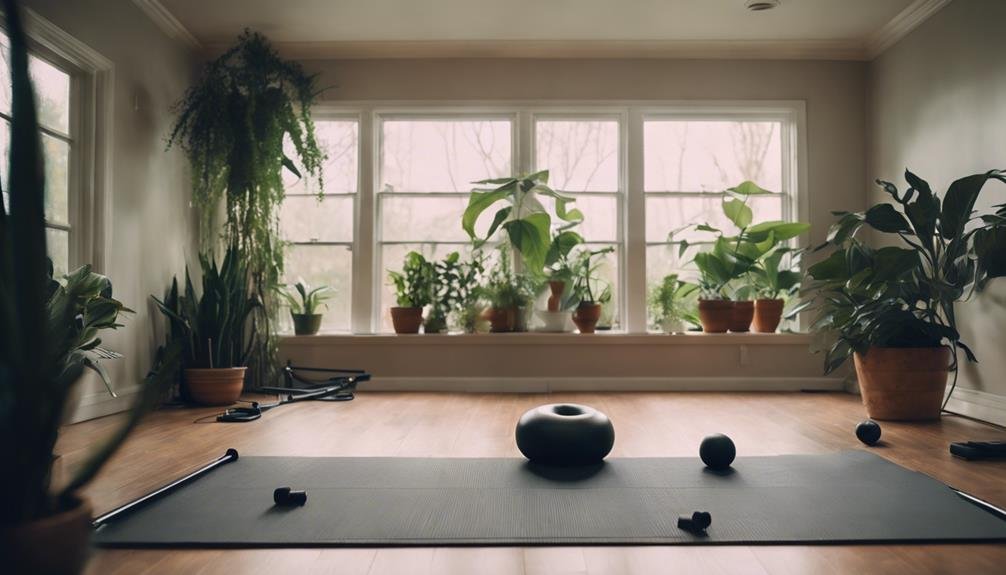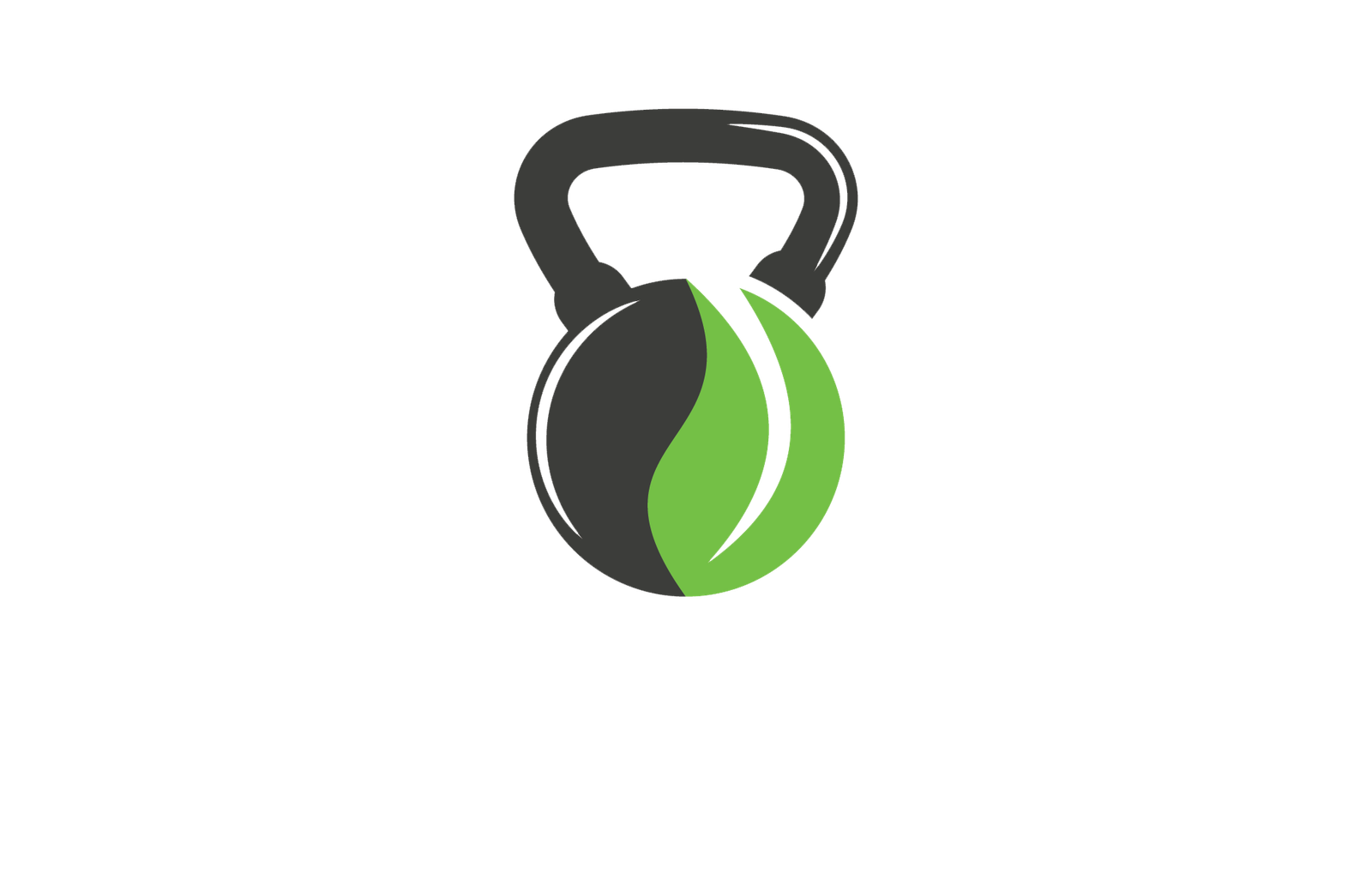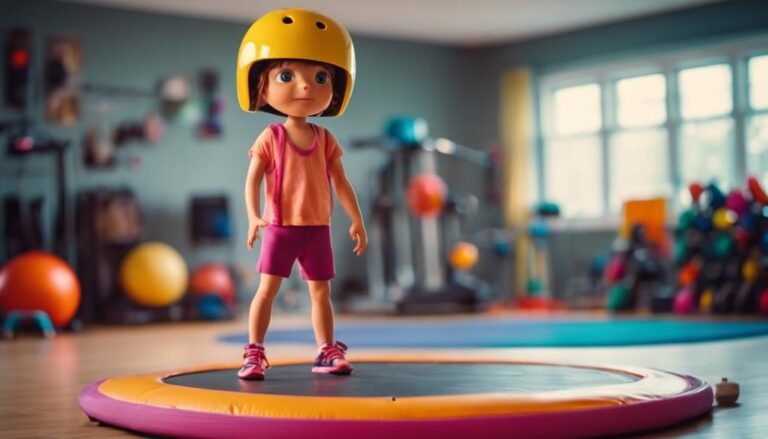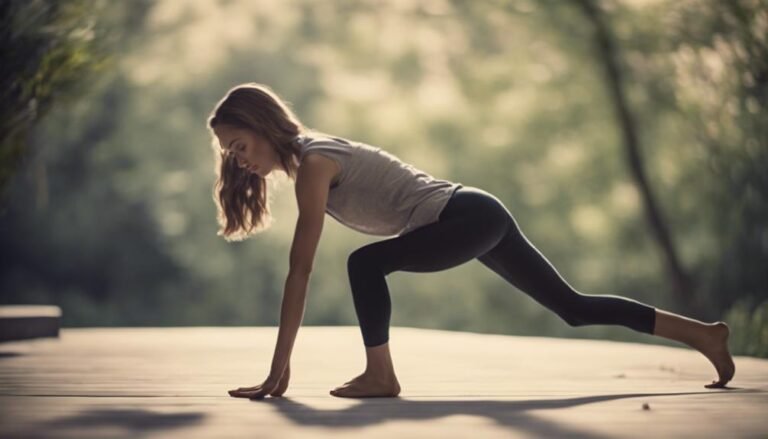Don't miss our holiday offer - 20% OFF!

Beginner Pilates Routines for Home Fitness
Nurture your body and mind with beginner-friendly Pilates routines that will transform your fitness journey, one pose at a time.
We're excited to start our Pilates journey at home! To get started, we'll need a good-quality yoga mat, resistance bands, and a Pilates ball. We'll focus on building core strength with exercises like Plank, Hundred, and Teaser, which engage our transverse abdominis muscle. Our posture and alignment will improve as we practice basic mat exercises like Pelvic Clock and Knee Folds. As we progress, we'll explore breathing techniques for relaxation and create a home workout space that inspires us to stay motivated. Let's embark on this journey and discover the many benefits of Pilates – and as we explore further, we'll uncover even more ways to transform our bodies and minds.
Key Takeaways
- Start with foundational exercises like Pelvic Clock and Knee Folds to build core strength and improve posture.
- Invest in a good-quality yoga mat, resistance bands, and a Pilates ball for a versatile home workout setup.
- Begin with short, achievable routines (20-30 minutes) and gradually increase duration as you build endurance.
- Focus on controlled, flowing movements, engaging your mind and body to promote a deeper connection and awareness.
- Practice regularly, ideally 2-3 times a week, to see progressive improvements in flexibility, balance, and overall physical fitness.
Getting Started With Pilates Basics
As we begin our Pilates journey, let's establish a solid foundation by mastering the fundamental principles and essential movements that will set us up for success. Pilates, developed by Joseph Pilates in the early 20th century, is rooted in the concept of mindful movement, which combines physical exercise with mental awareness. This holistic approach focuses on building strength, improving flexibility, and enhancing posture.
As we embark on the world of Pilates, understanding the six core principles is crucial: centering, concentration, control, precision, breath, and flow. These principles guide our movements, helping us develop a strong core, improve our posture, and increase our flexibility. We'll focus on controlled, flowing movements that engage our mind and body, promoting a deeper connection between the two. By embracing mindful movement, we'll cultivate awareness, balance, and harmony in our bodies. With a solid understanding of these basics, we'll be well-equipped to tackle more advanced Pilates routines and reap the numerous benefits this exercise method has to offer.
Essential Equipment for Home Workouts
We're investing in a few essential pieces of equipment to create a well-rounded home workout space that complements our Pilates practice. As beginners, we don't need to break the bank, and we're working within a reasonable fitness budget. Our top priority is a good-quality yoga mat, providing the necessary grip and cushioning for our joints. Next, we're adding a set of resistance bands, which are affordable, versatile, and easy to store. These will help us build strength and flexibility in our upper body.
To enhance our workout space, we're incorporating a few props like a Pilates ball and a foam roller. The ball will help us engage our core and improve our posture, while the foam roller will aid in self-myofascial release, reducing muscle tension. Finally, we're investing in a mirror, which will allow us to monitor our form and make adjustments as needed. By investing in these essential pieces of equipment, we're creating a well-rounded workout space that will support our Pilates practice and help us achieve our fitness goals.
Building Core Strength Exercises
As we focus on building core strength, we're about to discover the secret to a stronger, more stable body. We'll start by engaging our core muscles, the foundation of our entire Pilates practice, and work on strengthening our core foundation. By doing so, we'll be able to improve our posture, balance, and overall physical fitness.
Engage Your Core Muscles
By incorporating targeted exercises into our Pilates routine, we can develop a strong, stable core that serves as the foundation for better posture, balance, and overall physical fitness. Engaging our core muscles is essential for achieving core stability, which is vital for our overall well-being.
To isolate and engage our core muscles, we'll focus on exercises that target the transverse abdominis muscle. This deep abdominal muscle wraps around our spine and pelvis, providing stability and support for our entire body. When we engage our transverse abdominis, we're able to maintain good posture, reduce back pain, and improve our overall athletic performance.
Exercise | Description | Benefits
| — | — | —
Plank | Hold a steady position with our hands under our shoulders and toes on the ground | Improves core stability and strengthens shoulders
Hundred | Lie on our back with arms extended and legs bent, lifting our head and shoulders off the mat | Strengthens transverse abdominis and improves posture
Teaser | Lie on our back with arms extended and legs straight, lifting our arms and legs off the mat | Engages core muscles and improves balance
Strengthen Your Core Foundation
Now that we've isolated and engaged our core muscles, it's time to build on this foundation by incorporating exercises that strengthen our core. A strong core is essential for good posture, balance, and overall physical stability. It's the foundation upon which all other movements are built. By focusing on exercises that target our core, we'll improve our core stability, which is vital for everyday activities and athletic performance.
Here are some benefits we can look forward to:
- Improved posture: A strong core helps maintain a healthy spine and reduces the risk of back pain.
- Better balance and coordination: A stable core enables us to move with more control and confidence.
- Enhanced athletic performance: A strong core provides a solid foundation for powerful movements and explosive actions.
As we work on strengthening our core, we'll also engage our pelvic floor muscles, which are essential for good posture, bladder control, and overall core stability. By incorporating these exercises into our Pilates routine, we'll be building a strong foundation for a healthier, stronger body.
Improving Posture and Alignment
As we focus on improving our posture and alignment, we'll start by engaging our core muscles to create a solid foundation. Next, we'll explore body awareness exercises that help us develop a better sense of our body position in space. By mastering these techniques, we'll be able to maintain ideal spinal alignment and experience the many benefits that come with good posture.
Engaging Core Muscles
We start building a strong foundation for Pilates by engaging our core muscles, which is essential for improving our posture and overall alignment. This is because our core muscles, including our abdominals and back muscles, play a vital role in stabilizing our body and maintaining good posture. By engaging our core, we can improve our posture, reduce back pain, and even enhance our overall athletic performance.
When we engage our core, we're not just talking about sucking in our stomachs; we're talking about activating our deep core muscles, which include our transverse abdominis and pelvic floor muscles. This is achieved through core activation exercises that target these specific muscle groups.
Here are just a few benefits we can expect when we engage our core muscles:
- Improved posture and reduced back pain
- Enhanced athletic performance and balance
- Stronger pelvic stability and better overall body alignment
Body Awareness Exercises
By engaging our core muscles, we've laid the groundwork for proper posture and alignment, and now it's time to fine-tune our body awareness with exercises that promote better alignment and reduce muscle imbalances. As we move through these exercises, we'll cultivate a deeper kinesthetic sense, becoming more attuned to our body's position in space. This mindful movement helps us recognize when we're slouching or leaning, and make adjustments to maintain ideal alignment.
One exercise to try is the 'body scan.' Lie on your back with your arms at your sides, and bring your attention to each body part, starting at your toes and working your way up to the top of your head. As you focus on each area, release any tension or discomfort, and allow your body to relax into its natural alignment. We'll repeat this exercise regularly to develop greater body awareness and improve our posture.
Spinal Alignment Techniques
Let's focus on maintaining a neutral spine, where our ears, hips, and ankles align vertically, to establish a strong foundation for all our movements. This is the key to improving our posture and alignment. When we maintain a neutral spine, we reduce the risk of injury and improve our overall physical performance.
To achieve ideal spinal alignment, we need to focus on two essential techniques: Cervical Extension and Thoracic Mobilization. Cervical Extension helps to lengthen the neck and improve our posture, while Thoracic Mobilization increases flexibility in the middle back, allowing for better rotation and movement.
Three benefits we can expect from incorporating spinal alignment techniques into our Pilates routine:
- Improved posture: We'll stand taller and feel more confident
- Reduced back pain: By maintaining a neutral spine, we'll reduce the strain on our back muscles
- Increased flexibility: Our movements will become more efficient and effective
Basic Mat Exercises for Beginners
As we initiate our Pilates journey, mastering the fundamentals of basic mat exercises is essential for building a strong foundation and progressing to more advanced movements. We'll start by focusing on exercises that target our core, improve our posture, and enhance our overall body awareness.
Let's begin with the Pelvic Clock exercise, which helps us develop a stronger connection between our core and pelvis. Lie on your back with your knees bent and feet flat on the mat. Imagine a clock on your pelvis, with 12 o'clock at your belly button and 6 o'clock at your lower back. Engage your core and slowly move your pelvis in a clockwise direction, pausing at each hour mark. This exercise helps improve our posture and reduces lower back tension.
Next, we'll work on Body Isolation exercises, which help us develop control and precision in our movements. Lie on your back and lift your right arm and left leg off the mat, keeping them straight. Hold for a few seconds, then slowly lower back down. Repeat on the other side. This exercise enhances our body awareness and helps us isolate specific muscle groups. With consistent practice, we'll be amazed at how these basic mat exercises can transform our overall fitness and well-being.
Pilates for Flexibility and Mobility
As we focus on Pilates for flexibility and mobility, we're excited to explore how these exercises can improve our range of motion and enhance our body alignment. By incorporating specific Pilates movements into our routine, we can increase our flexibility and develop a more balanced, efficient way of moving. By doing so, we'll be able to move with more ease and confidence, and that's exactly what we're aiming for!
Improve Range of Motion
By incorporating Pilates exercises that target our major joints, we can increase our range of motion, reducing stiffness and enhancing our overall flexibility and mobility. This is especially important as we age, as our joints naturally lose flexibility and mobility over time. By incorporating Pilates into our fitness routine, we can maintain or even improve our range of motion, making everyday activities easier and reducing our risk of injury.
Here are just a few benefits we can expect to see:
- Improved flexibility in our hips, knees, and ankles, making it easier to move and perform daily activities
- Increased mobility in our shoulders and chest, allowing for better posture and reduced tension
- Enhanced dynamic movement, enabling us to move with more ease and fluidity, whether we're exercising or just going about our daily lives
Enhance Body Alignment
We can substantially improve our posture and reduce muscle tension by incorporating Pilates exercises that focus on enhancing body alignment, which is essential for maintaining flexibility and mobility. By practicing Pilates exercises that target body alignment, we can improve our overall posture, reduce the risk of injury, and enhance our overall physical performance.
| Pilates Exercise | Benefits for Body Alignment |
|---|---|
| Chest Expansion | Improves posture, opens up the chest, and strengthens shoulder muscles |
| Shoulder Bridge | Strengthens core, improves posture, and reduces lower back pain |
| Spine Stretch | Increases flexibility, improves posture, and reduces muscle tension |
| Teaser | Strengthens core, improves posture, and enhances body control |
Strengthening Your Upper Body
Our upper body, which includes our shoulders, back, and arms, plays a crucial role in maintaining good posture, preventing injuries, and enhancing overall physical performance. As beginners, focusing on strengthening our upper body is paramount to achieve overall fitness. With Pilates, we can target specific muscle groups to achieve toned shoulders and a powerful back.
Strengthening our upper body with Pilates brings numerous benefits, including:
- Improved posture: By strengthening our back and shoulders, we can maintain a straight spine and reduce the risk of back pain.
- Increased confidence: As we tone our upper body, we'll feel more confident in our own skin, and our overall physical performance will improve.
- Better overall health: A strong upper body can reduce the risk of injuries and improve our overall physical well-being.
Lower Body Toning Exercises
Targeting our legs, glutes, and core through Pilates exercises can substantially improve our overall lower body strength and tone, leading to better balance, agility, and athletic performance. As beginners, we can start with simple yet effective exercises that engage our lower body muscles. One of our favorite exercises is the calf raise. By lifting our heels off the mat and raising up onto our tiptoes, we're able to target our calf muscles, which can help improve our overall ankle stability and balance. Another exercise we love is the glute bridge. By lifting our hips off the mat and squeezing our glutes, we're able to engage our gluteus maximus, which can help improve our posture and reduce lower back pain. These exercises are easy to modify and can be done from the comfort of our own homes. By incorporating these exercises into our daily routine, we can start to see improvements in our lower body strength and tone, leading to a stronger, more confident us.
Breathing Techniques for Relaxation
By incorporating conscious breathing techniques into our daily routine, you can quiet your mind, calm your nervous system, and access a deeper sense of relaxation. As beginners, we often overlook the importance of breathing in our Pilates practice. However, conscious breathing is a powerful tool for stress management and mindfulness meditation. By focusing on our breath, we can quiet our minds and calm our nervous systems, leading to a deeper sense of relaxation and reduced anxiety.
Here are some benefits of incorporating conscious breathing into our daily routine:
- Reduces anxiety and stress: Conscious breathing helps calm our nervous system, reducing feelings of anxiety and stress.
- Improves sleep: By slowing down our breathing, we can prepare our bodies for a restful night's sleep.
- Increases focus and concentration: Conscious breathing helps quiet the mind, allowing us to focus and concentrate on our Pilates practice.
Creating a Home Workout Space
As we begin our Pilates journey, setting up a dedicated home workout space is essential for consistency and motivation. We need a peaceful retreat that inspires us to move and breathe. To create this space, we'll focus on decluttering strategies and personalized decor.
Let's start by clearing out a quiet corner or room, free from distractions. We'll remove any clutter, dust, and unnecessary items, making room for our mat and props. A calm, minimalist environment helps us focus on our practice. Consider incorporating plants, calming colors, and soft lighting to create a serene ambiance.
Next, we'll add personalized decor that resonates with our style and energy. This might include inspiring quotes, motivational images, or calming artwork. We can also incorporate aromatherapy, like essential oils or scented candles, to enhance our relaxation and focus.
Sample Routine for Beginners
Let's start with a sample Pilates routine designed specifically for beginners, focusing on foundational exercises that will help us build strength, flexibility, and body awareness. As we begin our Pilates journey, starting with a routine that sets us up for success is crucial. This routine will become a cornerstone of our morning routines, helping us feel more energized and focused throughout the day.
Three fundamental exercises to get us started are:
- Pelvic Clock: Lie on our backs with our knees bent and feet flat on the mat. Engage our core, then slowly tilt our pelvis in a clockwise direction, focusing on the movement in our lower back.
- Knee Folds: Lie on our backs with our knees bent and feet flat on the mat. Slowly lift our knees towards our chest, keeping our lower back pressed into the mat.
- Chest Expansion: Stand or sit with our arms at our sides. Take a deep breath in, feeling our chest expand and our shoulders relax. Exhale, feeling our chest deflate and our shoulders drop.
These exercises will help us develop a stronger core, improve our posture, and increase our flexibility. As we practice these exercises regularly, we'll start to notice significant improvements in our overall physical fitness and well-being.
Tips for Staying Motivated
One key to maintaining a consistent Pilates practice is setting specific, achievable goals for ourselves, whether that means practicing for a certain number of days per week or mastering a new exercise. By doing so, we'll stay motivated and focused on our progress. Another helpful tip is to create a reward system to celebrate our milestones. For instance, we could treat ourselves to a relaxing bath or a new workout outfit after reaching a certain goal. Having a fitness buddy can also make a huge difference. We can hold each other accountable, share tips, and provide moral support when we need it most. Plus, exercising with a friend can make the experience more enjoyable and help us look forward to our Pilates sessions. Additionally, we can mix up our routine by trying new exercises, taking online classes, or following along with Pilates videos. By incorporating these tips into our practice, we'll stay motivated, engaged, and committed to achieving our fitness goals.
Frequently Asked Questions
Can I Do Pilates if I Have a Pre-Existing Injury or Chronic Condition?
We acknowledge concerns about exercising with pre-existing injuries or chronic conditions; we adapt Pilates to accommodate injury considerations and focus on chronic management, ensuring a safe and beneficial practice that works for us.
How Often Should I Practice Pilates to See Noticeable Results?
We find that consistency matters when it comes to seeing noticeable results, aiming for 2-3 times a week, and gradually increasing intensity through progressive overload to challenge our bodies and achieve meaningful progress.
Can Pilates Help With Weight Loss or Is It Only for Toning?
"As we step into our modern-day fitness journey, reminiscent of ancient Greek athleticism, we ask: can Pilates really aid in weight loss or is it just for toning? The answer is yes, Pilates can help with weight management by burning Calories, supporting our overall fitness goals."
Do I Need to Be Flexible to Start Practicing Pilates?
"We debunk Pilates misconceptions: you don't need to be flexible to start! Flexibility myths aside, Pilates is for every body, regardless of flexibility level; it's about control, precision, and flowing movements that benefit anyone, regardless of flexibility."
Can I Modify Pilates Exercises to Accommodate My Age or Mobility Limitations?
As we begin this fitness journey, we're relieved to find that we can modify Pilates exercises to accommodate our age or mobility limitations, thanks to accessibility options and gentle adaptations that cater to our unique needs.
Conclusion
As we close this Pilates journey, we're just getting started. Our bodies are stronger, our cores are tighter, and our minds are clearer. But the real transformation begins now. Imagine waking up each morning feeling more confident, more energized, and more in control. The mat is calling, and we're just one breath away from tapping our full potential. The best is yet to come – are we ready?



